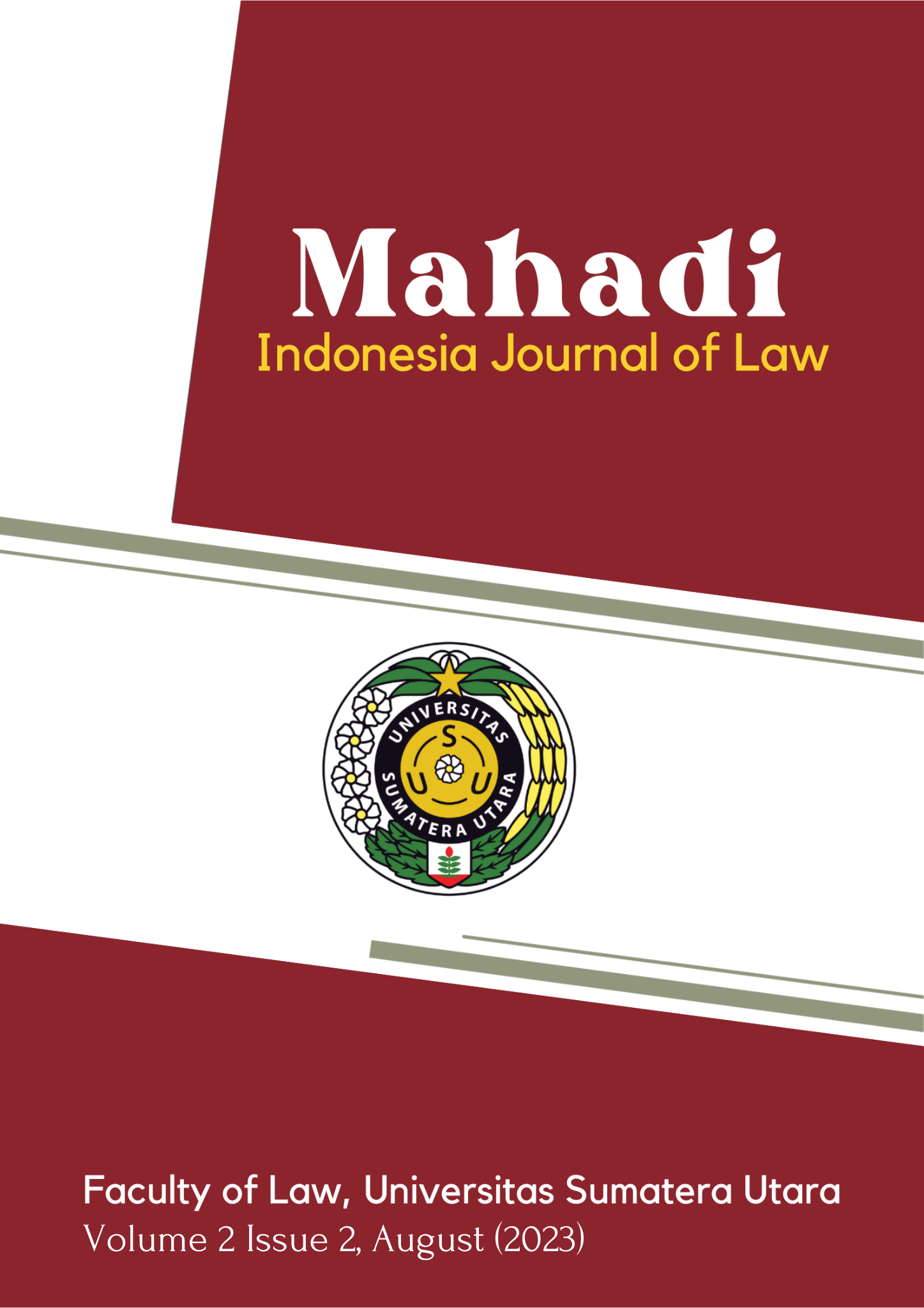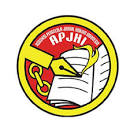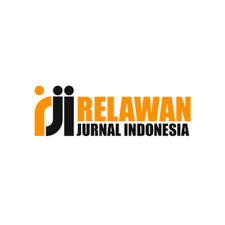The Ulos Silalahi Woven Fabric Serves As a Significant Cultural Attribute Within The Silahisabungan District, Located In The Dairi Regency
DOI:
https://doi.org/10.32734/mah.v2i2.13404Keywords:
Ulos Silalahi Woven, Silalahi Clan Descendants, Cultural Attributes.Abstract
The tittle of this research is Weaving Ulos Silalahi as a Cultural Attribute in Silahisabungan District, Dairi Regency. The objective of this study is to investigate the process involved in creating Ulos Silalahi Woven fabric and its utilization as a cultural symbol in traditional ceremonies within the Silahisabungan District. The present study employs ethnographic research methods. The findings indicated that the production of Ulos Silalahi Woven Fabrics commenced with the Mangunggas, which involves the bending of threads. Subsequently, the Manorha process is undertaken to string the threads into a humpalan. Finally, the Matibobok process is employed to create intricate designs on the fabric. The term "manirat" refers to the traditional process of fabric production, namely the creation of cloth and tassels. The utilization of Ulos Silalahi weaved cloth persists in contemporary times, particularly during traditional gatherings within Silalahi I Village. Ulos Silalahi, a type of woven fabric, holds significant cultural value among the Batak community, particularly among the descendants of the Silalahi clan residing in the Silahisabungan sub-district. This fabric is utilized throughout many occasions, both celebratory and mournful in nature.
Downloads
References
Budiana Setiawan, 2014, Strategy For Development Of Kupang Ikat Woven East Nusa Tenggara Province, Journal of Education and Culture, Vol. 20, Number 3
Bungaran, Antonius Simanjuntak. 2006. The Social Structure and Political System of the Toba Batak to 1945 An Approach to Cultural and Political Anthropology. . Jakarta: Indonesian Torch Foundation.
Genisa Meira, Titi Soegiarty, Bandi Sobandi, 2013, Ikat Fabrics with Natural Silk Materials (1Descriptive Analysis of Ikat Fabric Arrangements with Natural Silk Materials in Panawuan Weaving Village, Garut Regency), Craft Weaving and Textiles, Volume 1, Number 3
Ilhamuddin, H.M. et al. 2018. Creative Industry Development Strategy for the Pearl Jewelry Craft Sector in the City of Mataram', Jmm Unram - Master of Management Journal, 7(1), pp. 58– 69. doi: 10.29303/jmm.v7i1.402.
Jenkins, Richard. 2008. Social Identity. Medan : Bina Media Pioneer.
Koentjaraningrat. 2009. Introduction to Anthropology I. Jakarta. PT Rineka Cipta.
Lubis, Putri Kemala Dewi, 2023, Creative Economy Development in Tarutung City Through Ulos Woven Cloth MSMEs, Journal of Economics-Qu, Lubis et al. Journal of Economics-Qu Vol 13 No. 13
Mahsun, M., Rofiq, A. and Ismail, M. 2022 'Strategy for the Development of a Muslim Friendly Tourism Creative Industry Through SOAR Analysis and Quantitative Strategic Planning Matrix (QSPM)', OECONOMICUS Journal of Economics, 6(2), pp. 140–151. doi: 10.15642/oje.2022.6.2.140-15
Neununy, Dolfries, 2021, Traditional Ikat Woven Fabrics as Local Wisdom of the Tumbur Village Community, Tanimbar Islands Regency (Sociological Study and Implications for the Existence of Tumbur Community Culture), Journal of SaumlakI College of Economics, Vol.3. NUMBER 1. 2
Nicodemus Mardanus Setiohardjo, Agus Harjoko, 2014, Texture Analysis for Classification of Fabric Motifs (Case Study of East Nusa Tenggara Woven Fabrics), IJCCS - Indonesian Journal of Computing and Cybernetics Systems, Vol 8, No 2
Niessen, Sandra A.. 1993. Batak Cloth and Clothing. A Dynamic Indonesian Tradition. Kuala Lumpur: Oxford University Press.
Norman K. Denzin and Yvonna S. Lincoln, 2009, Handbook of Qualitative Research. Jakarta: Learning Library Publisher.
Nuraini, Siti, Asep Miftahul Falah, 2022, The Existence of Woven Fabrics in the Modern Era, Journal of ATRAT 10(2)
Oentoro, K. 2021. Usha Development Strategy for Sumba Weaving Crafts in Anajiaka Village, Central Sumba Regency. In Proceedings of the National Seminar on Social Design (SNDS) (Vol. 2, No. 1, pp. 455-461).
Oktaviani, Endah. Agus Sachari, Pindi Setiawan. (2017). Identification of Local Sarong Motifs First Generation Majalaya. Arena Textiles: 31(2), 75-86
Riwu, Priscilla Ferawai. Izak Y M Lattu, RamaSincerely Pilakoanu. (2020). Cain Memory Weaving: Contestation of Cultural Identity Methamphetamine Diaspora and Globalization in Cities Kupang, Central Java. Sociological Analysis: 9(1), 167-182
Setiawan, B. 2012. "Proposal of Sumba Ikat Weaving as an Intangible Cultural Heritage to UNESCO". Balitbang News. Vol IX, Issue 02, June 2012. Jakarta: Balitbang Kemdikbud
Sihombing, Sanggam B. 2022, Natural Tourism Object Development Strategy In Paropo Beach, Silahisabungan District, Dairi Regency, Journal of Science and Technology ISTP, VOL. 17, NO. 02, July
Sihombing, Merdi. 2014. Weaving Journey. Jakarta : Red & White Publishing.
Spardley, James P. 2007. Ethnographic Methods. Yogyakarta. Tiara Discourse.
Tambunan, Rytha. 2011. Simalungun Hiou Woven Cloth. Jakarta : Department of Culture and Tourism Directorate General of Cultural Values, Arts and Film.
Triyono, J. 2020. Strategy for the Development of Troso Ikat Weaving Tourism Village in Jepara, Central Java. Tourism: Scientific Journal, 14(02), 84-92
Utami, Sri. (2014). Gringsing Orelation WeavingMotives, Functions, And Symbolic Meanings. Image: 12(1)
Downloads
Published
How to Cite
Issue
Section
License
Copyright (c) 2023 Noviana Simbolon

This work is licensed under a Creative Commons Attribution-ShareAlike 4.0 International License.











